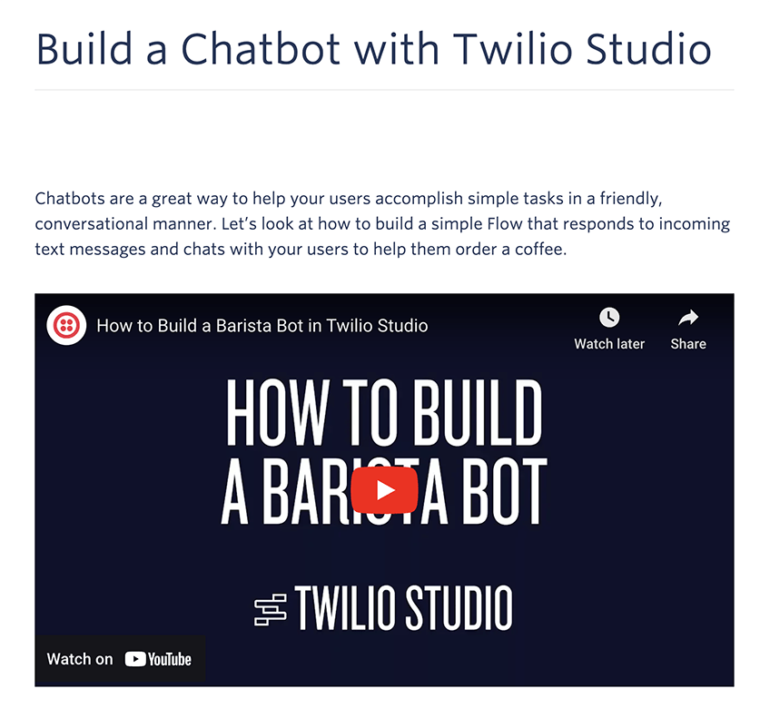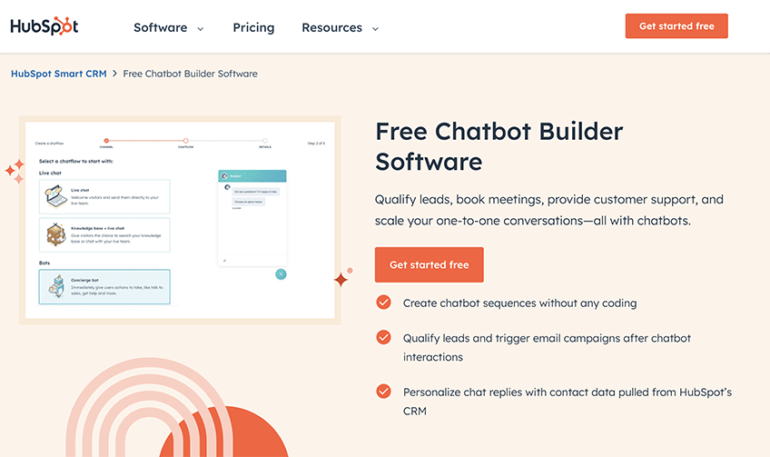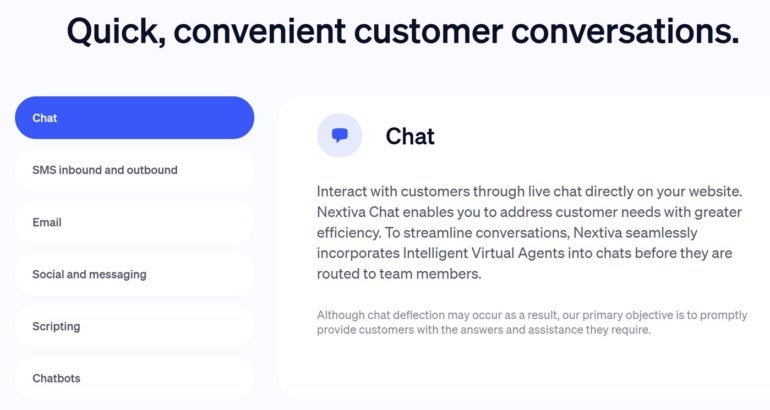Customers want to be able to reach you on their terms, preferably as fast as possible. Improving the contact center experience gets you closer to meeting that expectation.
Making it easy for customers to find what they need isn’t as complicated as it sounds. There’s no mystery or strange arcane science to it — you can roll out all the methods I’m about to show you in the next 24 hours.
1. Offer automatic callbacks
Automatic callbacks are a feature of your interactive voice response system (IVR).
It lets customers keep their place in line and receive a callback when it’s their turn. Technically, they’re still on hold, but you’re giving them the freedom to get on with their day while they wait.
The less obvious benefit? They’ll connect with an agent who can actually help them, instead of whoever’s available next.
It eases the pressure to connect quickly at the expense of quality.
Some advanced IVR systems also allow customers to schedule an appointment. Others let you control how long a caller waits before offering a callback.
Regardless, agents won’t notice a change in their workflow, making this one of the easiest ways to enhance the contact center experience for everyone.
Not only does it help the customer, but it also cuts down the chances of an irate caller wasting time on complaints about the long wait, yelling at your agents, or putting them in tough situations they don’t know how to handle.
Most call center platforms offer automated callbacks, but it’s not usually included on entry-level plans. If you have access, turning it on should take no more than a few clicks.
2. Use skills-based routing
Skills-based is one of the most efficient forms of call routing. It automatically connects callers with the agent best suited to handle their needs.
You can base this on a wide range of factors, including language, access level, experience, skills, knowledge, or familiarity with the caller. For instance, a French-speaking customer connecting with a French-speaking agent on the first try. It’s a simple example, but it makes a world of difference for the contact center experience.
With skills-based routing, customers don’t have to explain their situation multiple times or feel stuck with an agent who can’t help them.
This approach also helps play to your agents’ strengths. When agents consistently handle issues they’re well-equipped to resolve, it naturally sharpens their skills and boosts their confidence.
The benefits snowball from there. Agents who aren’t the right fit for a particular issue don’t waste their time, and those who can help don’t have to scramble for answers.
Everyone’s freed up for the best use of their time.
The biggest indicator that it’s working? An increase in your first-call resolution (FCR) rate. When the best-suited agent answers, the chance of resolving issues on first contact goes up.
From a technical standpoint, skills-based routing relies on data from your CRM software and information gathered from your IVR system.
It may take some thought to set up the best configuration for your team, but the process should be straightforward within your contact center software. Basic rules-based logic, conditional settings, AI, and help from your vendor’s customer support team will get you there.
3. Leverage AI or rules-based chatbots
Chatbots use large language models (LLM) to understand and respond to text-based inquiries via live chat. You can often upload your style guide, company handbook, and other documentation to help it answer common questions in line with your brand.
Alternatively, you can opt for rule-based chatbots instead. These guide users to relevant pages on your site or connect them to an agent when no other options are available.
If you don’t have a chatbot, it’s worth considering.
They’re available 24/7, they never need breaks, and they free up your agents for more complex tasks that can’t be automated.
Twilio is an excellent option for companies that want to build one from scratch. While it requires expertise and an upfront investment, it’s worth it if your budget allows.

If you’re on a tighter budget or prefer a DIY approach, HubSpot offers a simpler alternative with a drag-and-drop builder. It even has a free version and takes just a few minutes to set up.
Even a basic chatbot can answer questions that don’t require human intervention.

Already have a chatbot? Now’s a good time to simplify it.
Nobody wants to spend twenty minutes fighting an automated menu. Instead, program your chatbot to answer FAQs, deliver helpful content, and ask a few follow up questions. This is where chatbots thrive. If a situation requires anything more, it should connect the user to an agent or create a ticket for follow up.
Most importantly, make it easy for users to talk to an actual human if they want to.
4. Set up and optimize call flows
Call flows are predetermined routes a caller follows to reach the right agent. They include a series of pre-recorded messages, menu options (IVR), self-service options, and call routing techniques like skills-based, which we talked about above.
You can set up multiple numbers with different call flows — one for sales and one for customer service, for example.
The sales call flow may use skills-based routing while the customer service flow relies on an IVR menu to gather information before the caller talks to an agent.
If you only have one number, it’s even more important that your call flow quickly directs callers to the right place. Whether they want to make payments over the phone, see when you’re open, or talk to someone about an issue they’re having, streamlining your call flows turns a headache into a breeze.
Just about every contact center solution has a call flow builder. It’s typically a drag-and-drop tool that lets you map the entire journey from start to finish.
As you gather data over time, you’ll learn where callers drop off, which branches lead to the most resolutions, and other insights for further optimization.
You may think you know what customers want, but it’s better to let data guide your decisions.
When done well, call flows lead to increased first-call resolution, lower operational costs, better volume management, customers answering their own questions, and higher customer satisfaction.
5. Bolster self-service options
We’ve covered various ways customers can help themselves, from pre-recorded IVR menus to AI and rule-based chatbots.
But there are a few other (often overlooked) avenues — a community forum, social media, your website, and a knowledge base. Setting up and managing a community forum can be a fantastic resource, but can also cause more problems than it solves.
If you have the time, money, and energy to moderate it, a forum can be excellent. However, this post is all about quick ways to improve the contact center experience.
So, I’m going to focus on the other three as they’re a lot easier and more effective.
Many customers prefer digging through documentation, tutorials, and videos to solve their problems. Not only does providing resources for them to do so make them happy, it also reduces the burden on your customer support team.
If your website or customer-facing documentation is outdated, lacking, or non-existent, it’s time to change that. But don’t worry, you don’t need to overhaul everything overnight.
A little effort here and there can make a big difference, especially if you notice recurring questions during the sales process or issues for active customers.
When you spot a trend, have an agent document the solution. You can easily turn that into content for your knowledge base, website, or a video on YouTube and social media.
Over time, you’ll build a resource library where customers can help themselves.
6. Provide support via multiple channels
Voice remains the dominant channel for customer service, especially for complex issues.
But if you haven’t already expanded to email, live chat, and social media, it’s a great way to give customers optionality and speedier support.
Just a few weeks ago, I spent more than 20 minutes on hold with a company.
While waiting, I hit them up on X and got a reply before I connected with an agent on the phone. Although I preferred talking to someone, social media was a lot faster.
Even if you’re a smaller contact center, omnichannel support isn’t out of reach. Answering text-based inquiries is far easier than resolving them on the phone. You don’t necessarily need experienced call center agents to do this — you may even be able to get by using AI, doing it yourself, or outsourcing to contractors.
Plus, most modern contact center solutions, like Nextiva and RingCentral, offer omnichannel functionality on their higher tiers so you likely won’t need to switch tools or sign up for another subscription.

By centralizing all of your inboxes in one place, agents can work through inquiries as they come in across channels, without jumping from Instagram to Facebook to email.
7. Implement performance-based incentives
Incentives are popular because they work. You don’t have to offer financial rewards, though (although that would likely help) — even simple recognition of good performance can boost motivation and reduce turnover.
When agents are engaged and motivated, it trickles down to customers and the overall contact center experience.
Many contact center tools include gamification features, performance management, and other engagement tools that can help with this. You may even have access to some right now.


